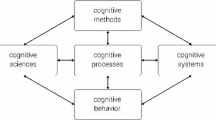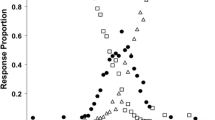Abstract
The development of ontologies for describing animal behaviour has proved to be one of the most difficult of all scientific knowledge domains. Ranging from neurological processes to human emotions, the range and scope needed for such ontologies is highly challenging, but if data integration and computational tools such as automated reasoning are to be fully applied in this important area the underlying principles of these ontologies need to be better established and development needs detailed coordination. Whilst the state of scientific knowledge is always paramount in ontology and formal description framework design, this is a particular problem with neurobehavioural ontologies where our understanding of the relationship between behaviour and its underlying biophysical basis is currently in its infancy. In this commentary, we discuss some of the fundamental problems in designing and using behaviour ontologies, and present some of the best developed tools in this domain.
Similar content being viewed by others
References
Adam D (2013) Mental health: on the spectrum. Nature 496:416–418
Amodeo DA, Jones JH, Sweeney JA, Ragozzino ME (2012) Differences in BTBR T+tf/J and C57BL/6J mice on probabilistic reversal learning and stereotyped behaviours. Behav Brain Res 227:64–72
Anderson DJ, Perona P (2014) Toward a science of computational ethology. Neuron 84:18–31
Ashburner M, Ball CA, Blake JA, Botstein D, Butler H, Cherry JM, Davis AP, Dolinski K, Dwight SS, Eppig JT, Harris MA, Hill DP, Issel-Tarver L, Kasarskis A, Lewis S, Matese JC, Richardson JE, Ringwald M, Rubin GM, Sherlock G (2000) Gene ontology: tool for the unification of biology. The Gene Ontology Consortium. Nat Genet 25:25–29
Belzung C, Lemoine M (2011) Criteria of validity for animal models of psychiatric disorders: focus on anxiety disorders and depression. Biol Mood Anxiety Disord 1:9
Bishop SL, Lahvis GP (2011) The autism diagnosis in translation: shared affect in children and mouse models of ASD. Autism Res 4:317–335
Brodkin J, Frank D, Grippo R, Hausfater M, Gulinello M, Achterholt N, Gutzen C (2014) Validation and implementation of a novel high-throughput behavioural phenotyping instrument for mice. J Neurosci Methods 224:48–57
Brown SD, Moore MW (2012) Towards an encyclopaedia of mammalian gene function: the International Mouse Phenotyping Consortium. Dis Model Mech 5(3):289–292
Catton C, Shotton D (2003) Illustration: database pictures tell a true story. Nature 422:374
Crawley JN (2008) Behavioural phenotyping strategies for mutant mice. Neuron 57:809–818
de Mooij-van Malsen AJ, Vinkers CH, Peterse DP, Olivier B, Kas MJ (2011) Cross-species behavioural genetics: a starting point for unravelling the neurobiology of human psychiatric disorders. Prog Neuropsychopharmacol Biol Psychiatry 35:1383–1390
Devor A, Bandettini PA, Boas DA, Bower JM, Buxton RB, Cohen LB, Dale AM, Einevoll GT, Fox PT, Franceschini MA, Friston KJ, Fujimoto JG, Geyer MA, Greenberg JH, Halgren E, Hamalainen MS, Helmchen F, Hyman BT, Jasanoff A, Jernigan TL, Judd LL, Kim SG, Kleinfeld D, Kopell NJ, Kutas M, Kwong KK, Larkum ME, Lo EH, Magistretti PJ, Mandeville JB, Masliah E, Mitra PP, Mobley WC, Moskowitz MA, Nimmerjahn A, Reynolds JH, Rosen BR, Salzberg BM, Schaffer CB, Silva GA, So PT, Spitzer NC, Tootell RB, Van Essen DC, Vanduffel W, Vinogradov SA, Wald LL, Wang LV, Weber B, Yodh AG (2013) The challenge of connecting the dots in the B.R.A.I.N. Neuron 80:270–274
Francken JC, Slors M (2014) From commonsense to science, and back: the use of cognitive concepts in neuroscience. Conscious Cogn 29C:248–258
Frishkoff G, Sydes J, Mueller K, Frank R, Curran T, Connolly J, Kilborn K, Molfese D, Perfetti C, Malony A (2011) Minimal Information for Neural Electromagnetic Ontologies (MINEMO): a standards-compliant method for analysis and integration of event-related potentials (ERP) data. Stand Genomic Sci 5(2):211–223
Gardner D, Akil H, Ascoli GA, Bowden DM, Bug W, Donohue DE, Goldberg DH, Grafstein B, Grethe JS, Gupta A, Halavi M, Kennedy DN, Marenco L, Martone ME, Miller PL, Muller HM, Robert A, Shepherd GM, Sternberg PW, Van Essen DC, Williams RW (2008) The neuroscience information framework: a data and knowledge environment for neuroscience. Neuroinformatics 6(3):149–160
Gkoutos GV, Schofield PN, Hoehndorf R (2012) The neurobehavior ontology: an ontology for annotation and integration of behavior and behavioral phenotypes. Int Rev Neurobiol 103:69–87
Glahn DC, Knowles EEM, McKay DR, Sprooten E, Raventós H, Blangero J, Gottesman II, Almasy L (2014) Arguments for the sake of endophenotypes: examining common misconceptions about the use of endophenotypes in psychiatric genetics. Am J Med Genet Part B 165:122–130
Gottesman II, Gould TD (2003) The endophenotype concept in psychiatry: etymology and strategic intentions. Am J Psychiatry 160:636–645
Gould TD, Gottesman II (2006) Psychiatric endophenotypes and the development of valid animal models. Genes Brain Behav 5:113–119
Grayling A (2006) Descartes: the life and times of a genius. Walker & Co., New York
Hall F (1983) Dance notation and choreology. In: Copeland R, Cohen M (eds) What is dance?. OUP, Oxford
Hastings J, Frishkoff GA, Smith B, Jensen M, Poldrack RA, Lomax J, Bandrowski A, Imam F, Turner JA, Martone ME (2014) Interdisciplinary perspectives on the development, integration, and application of cognitive ontologies. Front Neuroinformatics 8:62
Heil J (2012) Philosophy of mind: a contemporary introduction (3rd edn. revised), Routledge, London
Hinde RA (1970) Aggression in animals. Proc R Soc Med 63:162–163
Hoehndorf R, Schofield PN, Gkoutos GV (2011) PhenomeNET: a whole-phenome approach to disease gene discovery. Nucleic Acids Res 39(18):e119
Hoehndorf R, Hancock JM, Hardy NW, Mallon AM, Schofield PN, Gkoutos GV (2014) Analyzing gene expression data in mice with the Neuro Behavior Ontology. Mamm Genome 25:32–40
Hoehndorf R, Schofield PN, Gkoutos GV (2015) Analysis of the human diseasome using phenotype similarity, between common, genetic, and infectious diseases. Nat Sci Rep 5:10888
Jensen M, Cox AP, Chaudhry N, Ng M, Sule D, Duncan W, Ray P, Weinstock-Guttman B, Smith B, Ruttenberg A, Szigeti K, Diehl AD (2013) The neurological disease ontology. J Biomed Semant 4:42–48
Kalueff AV, Gebhardt M, Stewart AM, Cachat JM, Brimmer M, Chawla JS, Craddock C, Kyzar EJ, Roth A, Landsman S, Gaikwad S, Robinson K, Baatrup E, Tierney K, Shamchuk A, Norton W, Miller N, Nicolson T, Braubach O, Gilman CP, Pittman J, Rosemberg DB, Gerlai R, Echevarria D, Lamb E, Neuhauss SC, Weng W, Bally-Cuif L, Schneider H, Zebrafish Neuroscience Research C (2013) Towards a comprehensive catalog of zebrafish behaviour 1.0 and beyond. Zebrafish 10:70–86
Kandel ER, Markram H, Matthews PM, Yuste R, Koch C (2013) Neuroscience thinks big (and collaboratively). Nat Rev Neurosci 14:659–664
Kas MJ, Fernandes C, Schalkwyk LC, Collier DA (2007) Genetics of behavioural domains across the neuropsychiatric spectrum; of mice and men. Mol Psychiatry 12:324–330
Kas MJ, Kahn RS, Collier DA, Waddington JL, Ekelund J, Porteous DJ, Schughart K, Hovatta I (2011a) Translational neuroscience of schizophrenia: seeking a meeting of minds between mouse and man. Sci Transl Med 3:102mr103
Kas MJ, Krishnan V, Gould TD, Collier DA, Olivier B, Lesch KP, Domenici E, Fuchs E, Gross C, Castren E (2011b) Advances in multidisciplinary and cross-species approaches to examine the neurobiology of psychiatric disorders. Eur Neuropsychopharmacol 21:532–544
Kohler S, Doelken SC, Mungall CJ, Bauer S, Firth HV, Bailleul-Forestier I, Black GC, Brown DL, Brudno M, Campbell J, Fitzpatrick DR, Eppig JT, Jackson AP, Freson K, Girdea M, Helbig I, Hurst JA, Jahn J, Jackson LG, Kelly AM, Ledbetter DH, Mansour S, Martin CL, Moss C, Mumford A, Ouwehand WH, Park SM, Riggs ER, Scott RH, Sisodiya S, Vooren SV, Wapner RJ, Wilkie AO, Wright CF, Vulto-van Silfhout AT, Leeuw ND, de Vries BB, Washingthon NL, Smith CL, Westerfield M, Schofield P, Ruef BJ, Gkoutos GV, Haendel M, Smedley D, Lewis SE, Robinson PN (2013) The Human Phenotype Ontology project: linking molecular biology and disease through phenotype data. Nucleic Acids Res 42:D966–D974
Larson SD, Martone ME (2009) Ontologies for neuroscience: what are they and what are they good for? Front Neurosci 3:60–67
Levitis DA, Lidicker WZ, Freund G (2009) Behavioural biologists don’t agree on what constitutes behaviour. Anim Behav 78:103–110
Lindquist KA, Wager TD, Bliss-Moreau E, Kober H, Barret LF (2012a) Authors’ response: what are emotions and how are they created in the brain? Behav Brain Sci 35:172–202
Lindquist KA, Wager TD, Kober H, Bliss-Moreau E, Barrett LF (2012b) The brain basis of emotion: a meta-analytic review. Behav Brain Sci 35:121–143
Makkink GF (1936) An attempt at an ethogram of the European avocet (Recurvirostra avosetta L.) with ethological and psychological remarks. Ardea 25:1–60
Mandillo S, Tucci V, Holter SM, Meziane H, Banchaabouchi MA, Kallnik M, Lad HV, Nolan PM, Ouagazzal AM, Coghill EL, Gale K, Golini E, Jacquot S, Krezel W, Parker A, Riet F, Schneider I, Marazziti D, Auwerx J, Brown SD, Chambon P, Rosenthal N, Tocchini-Valentini G, Wurst W (2008) Reliability, robustness, and reproducibility in mouse behavioural phenotyping: a cross-laboratory study. Physiol Genomics 34:243–255
Matter SP (2013) The prince of medicine; Galen in the Roman Empire. Oxford University Press, Oxford
Midford PE (2004) Ontologies for behaviour. Bioinformatics 20:3700–3701
Minett MS, Eijkelkamp N, Wood JN (2014) Significant determinants of mouse pain behaviour. PLoS One 9:e104458
Moy SS, Nadler JJ, Young NB, Perez A, Holloway LP, Barbaro RP, Barbaro JR, Wilson LM, Threadgill DW, Lauder JM, Magnuson TR, Crawley JN (2007) Mouse behavioural tasks relevant to autism: phenotypes of 10 inbred strains. Behav Brain Res 176:4–20
Naviaux JC, Schuchbauer MA, Li K, Wang L, Risbrough VB, Powell SB, Naviaux RK (2014) Reversal of autism-like behaviours and metabolism in adult mice with single-dose antipurinergic therapy. Transl Psychiatry 4:e400
Nestler EJ, Hyman SE (2010) Animal models of neuropsychiatric disorders. Nat Neurosci 13:1161–1169
Olivier B, Rasmussen D, Raghoebar M, Mos J (1990) Ethopharmacology: a creative approach to identification and characterisation of novel psychotropics. Drug Metab Drug Interact 8:11–29
Pegoraro LF, Setz EZ, Dalgalarrondo P (2014) Ethological approach to autism spectrum disorders. Evolut Psychol 12:223–244
Pietropaolo S, Sluyter F, Crusio WE (2014) Behavioural genetics of the mouse. Cambridge University Press, Cambridge
Poli R (2001) The basic problem of the theory of levels of reality. Axiomathes 12:261–283
Poline JB, Breeze JL, Ghosh S, Gorgolewski K, Halchenko YO, Hanke M, Haselgrove C, Helmer KG, Keator DB, Marcus DS, Poldrack RA, Schwartz Y, Ashburner J, Kennedy DN (2012) Data sharing in neuroimaging research. Front Neuroinformatics 6:9
Richards RJ (1989) Darwin and the emergence of evolutionary theories of mind and behaviour. University of Chicago Press, Chicago
Robinson PN, Webber C (2014) Phenotype ontologies and cross-species analysis for translational research. PLoS Genet 10:e1004268
Schleidt WM, Yakalis G, Donnelly M, McGarry J (1984) A proposal for a standard ethogram, exemplified by an ethogram of the bluebreasted quail (Coturnix chinensis). Zeitschrift für Tierpsychologie 64:193–220
Schriml LM, Arze C, Nadendla S, Chang YW, Mazaitis M, Felix V, Feng G, Kibbe WA (2012) Disease ontology: a backbone for disease semantic integration. Nucleic Acids Res 40:D940–D946
Sherwin CM (1998) Voluntary wheel running: a review and novel interpretation. Anim Behav 56(1):11–27
Smith CL, Eppig JT (2012) The mammalian phenotype ontology as a unifying standard for experimental and high-throughput phenotyping data. Mamm Genome 23:653–668
Smith CL, Eppig JT (2015) Expanding the mammalian phenotype ontology to support high throughput mouse phenotyping data from large-scale mouse knockout screens. J Biomed Semant 6:11–15
Sternberg S (1966) High-speed scanning in human memory. Science 153:652–654
Stroop JR (1935) Studies of interference in serial verbal reactions. J Exp Psychol 18(6):643–662. doi:10.1037/h0054651
Thompson DA (1910) A history of animals. Clarendon Press, Oxford
Thompson AGB, Uphill J, Lowe J, Porter MC, Lukic A, Carswell C, Rudge P, MacKay A, Collinge J, Mead S (2015) Genome-wide association study of behavioural and psychiatric features in human prion disease. Transl Psychiatry 5:e552
Turner JA, Laird AR (2012) The cognitive paradigm ontology: design and application. Neuroinformatics 10:57–66
Author information
Authors and Affiliations
Corresponding authors
Rights and permissions
About this article
Cite this article
Gkoutos, G.V., Hoehndorf, R., Tsaprouni, L. et al. Best behaviour? Ontologies and the formal description of animal behaviour. Mamm Genome 26, 540–547 (2015). https://doi.org/10.1007/s00335-015-9590-y
Received:
Accepted:
Published:
Issue Date:
DOI: https://doi.org/10.1007/s00335-015-9590-y




